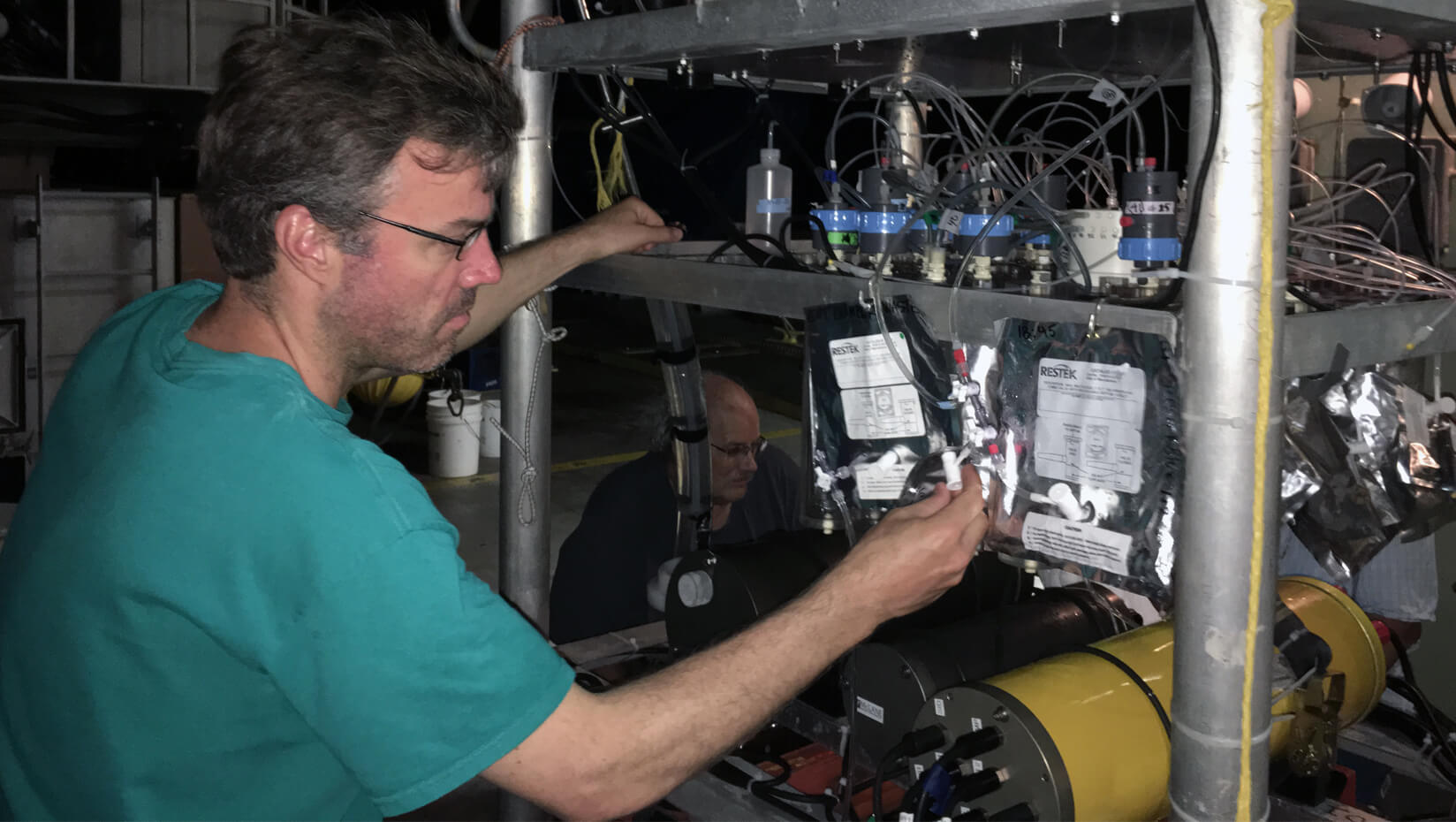
Learn about deep-sea hydrothermal vents at DMC
University of Maine marine microbiologist Jeremy Rich will talk about fertile clusters of life flourishing on the dark deep-sea floor at 10:30 a.m. Friday, July 28 in Brooke Hall at the Darling Marine Center.
Deep-sea hydrothermal vents — hot springs on the ocean floor — have fascinated scientists and the public since they were discovered in 1977.
The biological communities — including large tubeworms and clams — around the vents are possible due to chemical activity — chemosynthesis — as opposed to photosynthesis on Earth’s surface.
Fundamental properties of life at hydrothermal vents are not completely understood — which is a problem for placing hydrothermal vents into a broader context of how the global ocean functions.
In April 2017, Rich and an international team of collaborators took part in an expedition in the equatorial Pacific Ocean. The team descended to the seafloor in the submersible Alvin to gain insights into the vent ecosystems. To measure rates of processes at the seafloor, they deployed a Vent-Submersible Incubation Device (Vent-SID).
Rich’s talk will describe life at hydrothermal vents and his experiences deploying the Vent-SID.
Based at the DMC, Rich is a faculty member in the School of Marine Sciences. His research addresses the role of microbes in the flow of elements and nutrients in ecosystems, with a particular focus on the nitrogen cycle.
His talk is part of DMC’s summer science seminar series, during which renowned scientists in the field of marine biology engage the public in topics ranging from the studies of the Gulf of Maine to the exploration of the deep sea. The complete list of speakers is posted. Registration is required for the free talk. For a disability accommodation, call 563.3146.
